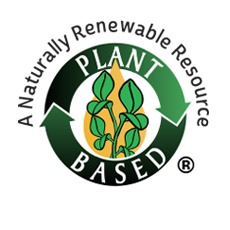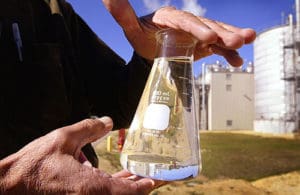
GREEN STANDARDS
GEMTEK® sets the Gold Standard for producing Green products that are safe for people and the environment.

GEMTEK® PRODUCTS ARE:
- Non-toxic
- Non-hazardous
- Non-carcinogenic
- Readily biodegradable
- Derived from renewable resources
NON-TOXIC:
Toxic substances can be defined as those chemicals present in the workplace, which are capable of causing harm to people. In this definition, the term chemical includes dusts, mixtures, and common materials such as paints, adhesive, fuels, and solvents. OSHA currently regulates exposure to approximately 400 substances. The OSHA Chemical Sampling Information file contains listings for approximately 1,500 substances; the U.S. Environmental Protection Agency’s (EPA’s) Toxic Substance Control Act (TSCA) Chemical Substances Inventory lists information on more than 62,000 chemicals or chemical substances; some libraries maintain files of material safety data sheets (MSDS) for more than 100,000 substances.
NON-CARCINOGENIC:
Carcinogens are agents that can cause cancer. In industry, there are many potential exposures to carcinogens. Generally, workplace exposures are considered to be at higher levels than for public exposures. “Potential occupational carcinogen” means any substance, or combination or mixture of substances, which causes an increased incidence of benign and/ or malignant tumors (neoplasms), or a substantial decrease in the latency period between exposure and onset of tumors in humans or in one or more experimental mammalian species as the result of any oral, respiratory or dermal exposure, or any other exposure which results in the induction of tumors at a site other than the site of administration.
READILY BIODEGRADABLE:
Biodegradability is measured by the amount of time it takes for large organic molecules to break down into smaller molecules in the environment. A chemical that is readily biodegradable begins to breakdown immediately and eventually degrades into water, mineral salts, carbon dioxide and other oxides. Products that are not biodegradable may accumulate in the ecosystem and pose a potential danger of entering plant and animal tissue. Many products are touted as biodegradable and probably are, but it is the speed with which this occurs that is important. EPA standard (40 CFR part 796) states that 98% of the product must be degraded between 7 to 28 days. Products that degrade longer than 28 days pose a potential risk to the environment.
DERIVED FROM RENEWABLE RESOURCES:
GEMTEK® products are derived from renewable plant-based materials from grains, nuts and seed crops. GEMTEK® products do not contain petroleum distillates or synthetics including artificial foaming and thickening agents, builders, reagents, dyes or fragrances. Although some citrus-based products would be defined as biobased and safer for the environment, they are not typically safe for people. Therefore, GEMTEK® products do not contain terpenes such as d-Limonene.

BIOBASED INDUSTRY

GENERALLY HEALTHIER AND SAFER FOR THE USER
Manufacturers and end-users reduce regulatory problems by replacing hazardous chemicals listed by the EPA’s Toxic Release Inventory. Manufacturers and end-users improve worker safety by using biobased products. Biobased produces are usually less toxic, less flammable and less corrosive than petroleum-based products.
GENERALLY HEALTHIER FOR THE ENVIRONMENT
Using biobased products decreases the amount of upstream pollution generated from the extraction and processing of crude oil into chemicals. Most biobased products are biodegradable and safe to dispose of.
REDUCED DEPENDENCE ON IMPORTED OIL
Biobased products are becoming increasingly competitive with petroleum-based products. Manufacturers and end-users can also save money by avoiding special permits, compliance penalties and disposal cost.
EXTREMELY HELPFUL TO THE RURAL ECONOMY
Manufacturing biobased products stimulates rural economic development. Agricultural crops efficiently convert into higher value end-products creating greater income opportunities for farmers and rural communities.

